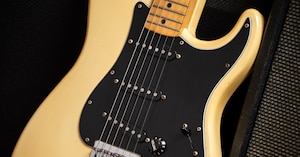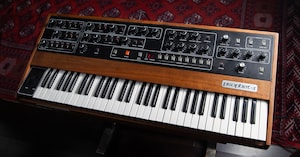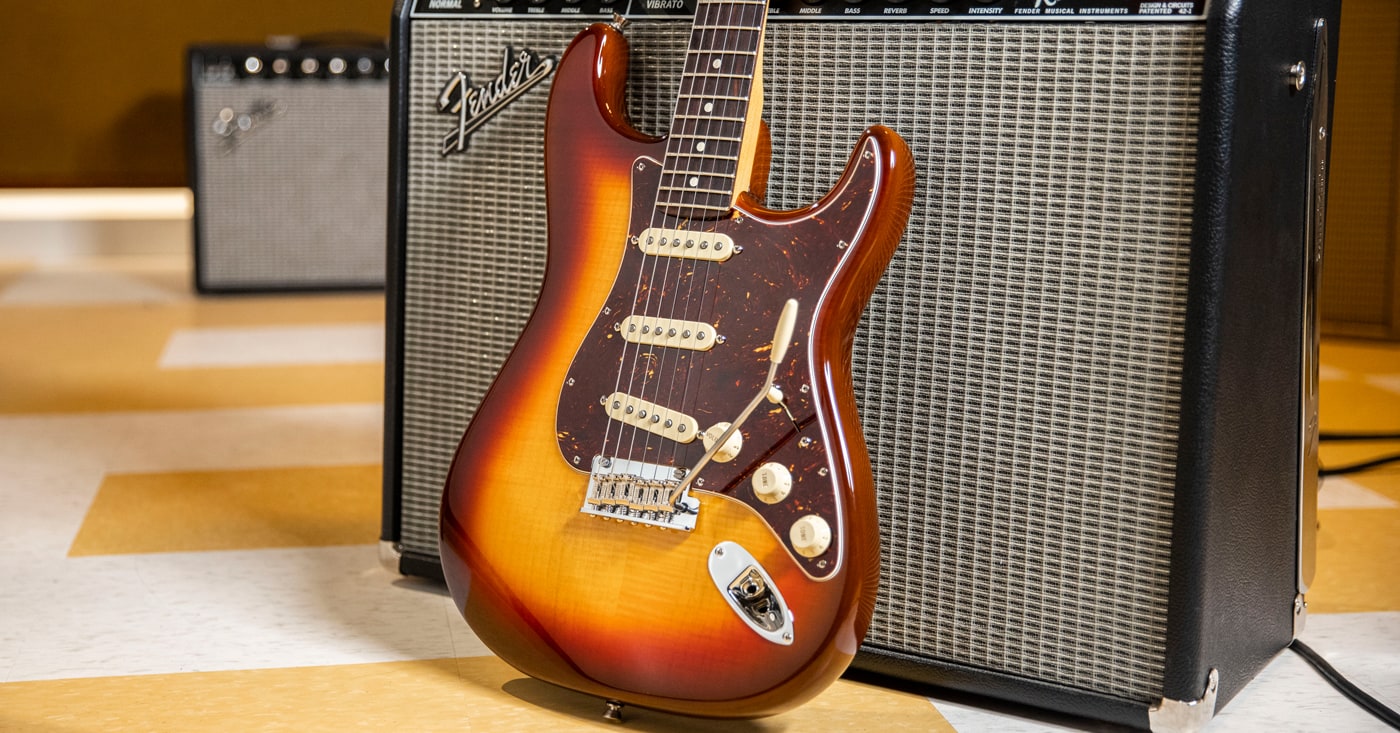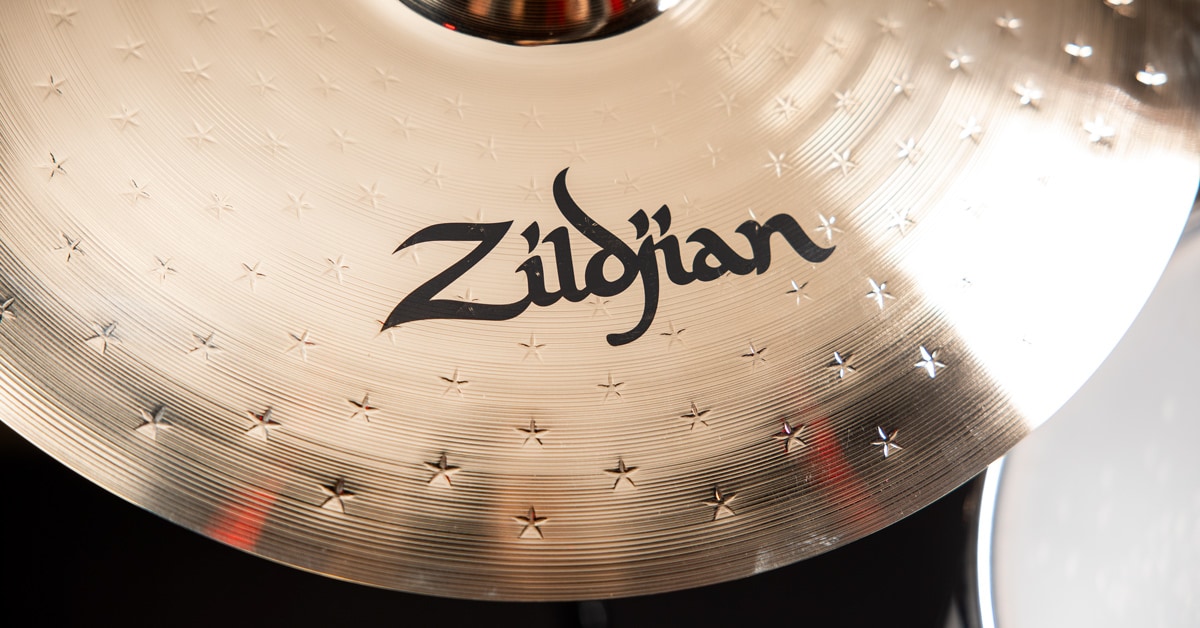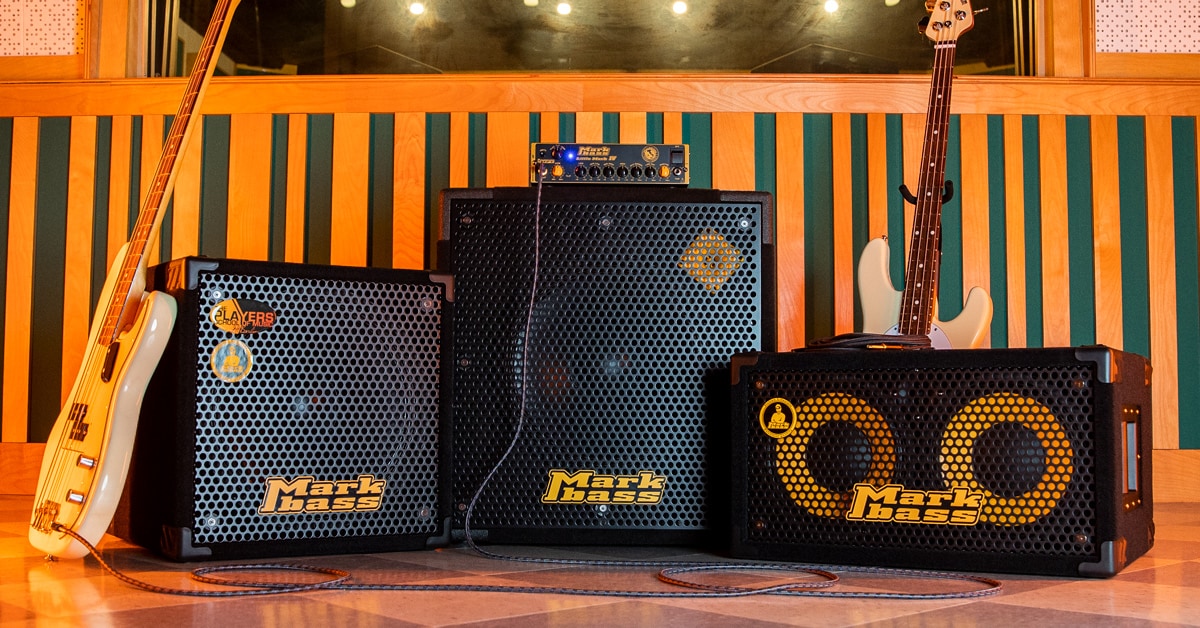Italy has given us many things—art, architecture, culture, language, food, opera, the Renaissance, espresso and … bass amps. Yes, you heard that right—world-class bass amps. Thanks to the brilliant engineering, innovative thinking and musical sensibility of founder Marco De Virgiliis, Markbass amps—distributed exclusively in the United States by Guitar Center—have become the amp in demand by players' players like Marcus Miller, Jeff Berlin, Matt Bissonette, Hadrien Feraud, Richard Bona and many others. In this article, we're going to take a look at how Markbass became what they are today and what it is that makes their amps the choice of so many pros.
Table of Contents
The History of Markbass
Markbass' Product Philosophy
Featured Markbass Products
It's All in the Name: The Markbass Decoder Ring
Markbass Amps
Markbass Combos
CMB 101 and 121 Black Line Combos
Micromark 801 60W
Marcus Miller CMD 101 Micro 60
CMD JB Players School
Mini CMD 121P IV
Markbass Heads
Little Mark 250 Blackline
Little Mark IV
Little Mark 58R
Markbass Cabinets
MB58R
Standard 104H
Standard 151 HR & Traveler 151P
Traveler 102P
New York 121
Conclusion
The History of Markbass
The foundations for Markbass were laid when founder Marco De Virgiliis began playing in a band at the age of 15. Though his principal instrument was saxophone, he told us, "I always had my focus and attention on the bass, because I love that instrument." At 18, he began university studies in electronic engineering. "I was studying specialized electronics for amplifiers and cabinets," he said, "but after two years, I went to work for a big company that was working in research and development in high-frequency radio applications." Realizing that this was not work that fully engaged him, he made the decision to follow his heart and began to work on designs for musical gear while still working full time at his corporate job.
It wasn't long before De Virgiliis' ideas about bass amplification started to come together. He explains, "I started to do some prototypes of cabinets and amps. At the same time, I met some other engineers, some of whom are still working with me. I was always in tour in Italy with my little car, and I went to all the jazz festivals. I met so many people, and one of the first was [Yellowjackets' bassist] Jimmy Haslip, who was encouraging me to continue on this amplifier design."
De Virgiliis' concept for bass amps was closer to that of a studio monitor than a traditional bass amp. As he puts it, "My idea was to make an amplifier where the midrange frequencies were more present—I wanted you to have the real sound of your bass." After five years of splitting his time between his full-time corporate job and the adventures of designing, prototyping and starting to build his first product, the Parsec bass amp, he decided it was time to take the chance, quit his job and start his own company. According to De Virgiliis, after a local dealer in Rome approached New York City session bassist Frank Gravis—then touring with the late Hiram Bullock's band—asking him to try the amp on stage, the bassist went to the dealer and said, "You need to give me the number of this guy." What's especially amazing is that 22 years later, the first Markbass international endorser is still an avid supporter of the Markbass line.
It wasn't long after this that De Virgiliis had the opportunity to work with Sterling Ball at Ernie Ball/Music Man, designing an amp and several cabinets. But De Virgiliis' ideas and vision were larger than the role he could play working for someone else. As he said,
"I am in love with Sterling, but I had my idea, and I understood that I needed to follow my idea. I spoke with Sterling, and we decided to divide our future. I decided to display a completely new line at a show in Italy.” Combining his first name with the instrument he loved, Markbass was born.
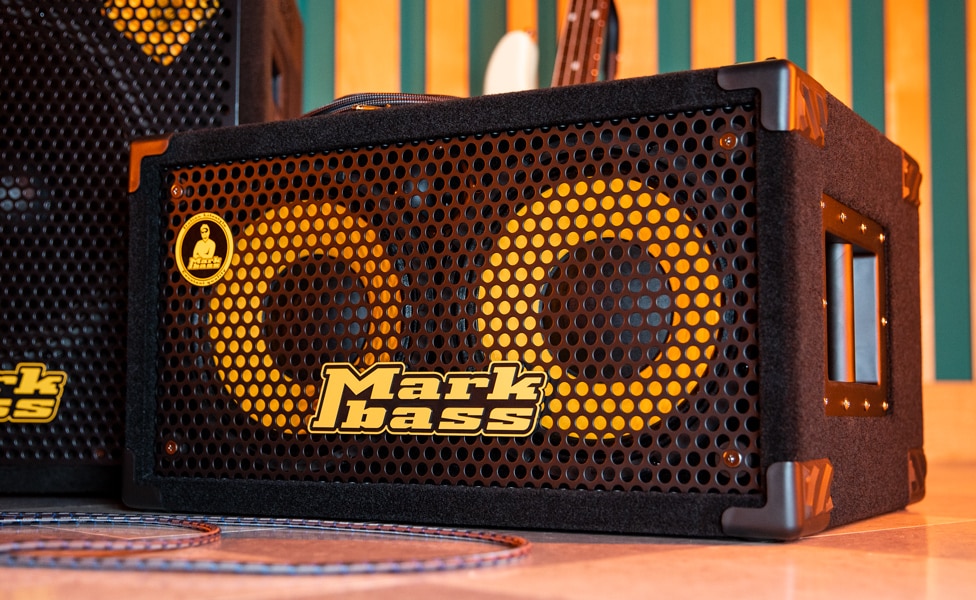
One of the first evolutionary changes to come from the new company was the introduction of speakers with neodymium magnets, sometimes referred to simply as "Neo." While this material had been in use for some time in microphones, due to its powerful magnetic field, it had not previously been used in speaker construction. With a magnetic field 18 times stronger than standard ceramic or alnico, Neo-based speakers can use a much lighter magnet, producing higher SPL and a combination of faster response and greater sensitivity. One of the first converts to the new speakers and cabinets was Matt Bissonette, then touring with Joe Satriani. At a show in Rome, Bissonette tried the new cabinet, and told De Virgiliis, "Marco, this is amazing!" But when he lifted the cabinet, it changed to, "Marco, I love you!"
As light and convenient as the Neo-loaded cabinets may be, without great tone, they would just be a novelty. Luckily, as De Virgiliis says, "People say the first matter is always tone—tone, for me, is very important." And the attention he pays to the whole design, from input to cabinet design to the final sound that emerges from that speaker, creates a whole that far exceeds the sum of its parts.
One of the early endorsers of Markbass was Jeff Berlin, who reached out after having played the amp, saying, according to De Virgiliis' memory, "I want to be your endorser, because I tried the best amplifier in the world. I don't want anything [in return]—I just want to be an endorser." The powerful and affordable CMD JB Players School combo has been a popular choice for students (and pros) since they first teamed up.
By far, one of Markbass' most well-known endorsers, and someone who has been involved in contributing ideas for De Virgiliis' fertile engineering imagination to bring to life has been Marcus Miller. De Virgiliis was inspired by an interview Miller had done where the bassist was talking about the direct-into-the-board sound he was used to as a studio musician, and how he needed that in an amp. Since the original slogan of Markbass was "The Real Sound of Your Bass," the interview resonated with De Virgiliis. When Miller's manager reached out to Markbass at a NAMM show about the possibilities of a collaborative project, it was an opportunity De Virgiliis simply couldn't pass up. The result was a line of Marcus Miller Signature bass amps, from the studio-focused Marcus Miller CMD 101 Micro (which we'll discuss more later) to several higher-wattage combos and head/cab combinations designed at getting Miller's signature sound on tour.
But why is it that so many session bassists and touring pros turn to Markbass? In the next section, we'll look a little into the design philosophy that has helped make that happen.
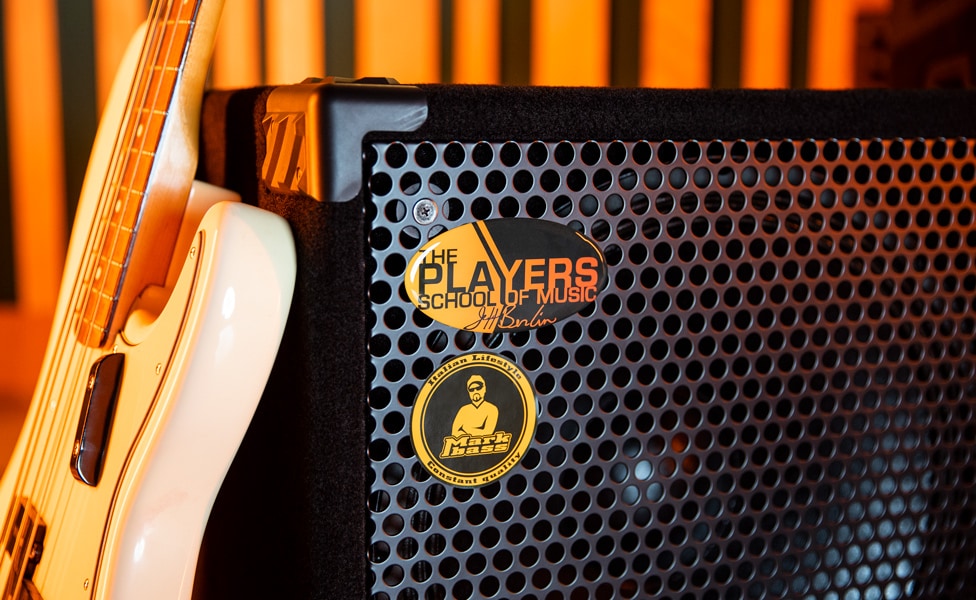
Markbass’ Product Philosophy
As we mentioned in the previous section, the original slogan of Markbass was "The Real Sound of Your Bass," and that has been the polestar for Marco De Virgiliis' designs dating all the way back to his original Parsec bass amp. A big part of this means not just designing individual components of a bass amplification setup, but additionally treating it as a whole system, each part of which is contributing to the final result. As De Virgiliis describes it, "There are a lot of things that you need to deal with. To illustrate, in my amplifiers, we use a power section that is made by us, and we never use the power model that all my competitors are using, because we want to have our sound. Especially on the bass, you need to provide the power and dynamics in a special way. It is very different to use this kind of power for low frequency, rather than for high frequency. So, we need to have a special amplifier. But it's true that it depends on all there is throughout the system. That’s very important. All of our amps, we start from the signal—from the input jack—to arrive at the end of the chain—the power amp—that is the concept."
That power amp design is a key point in the chain, with versions of Markbass' proprietary design running from 60W to 1,000W across the line. Designed to deliver the same sort of accuracy as high-end studio monitor amps, these amps, matched with the custom speaker designs (and the instantly recognizable Markbass yellow cones), pump out cleanly articulated, incredibly accurate reproduction of the sound of your bass.
Another key factor in Markbass' success is the level at which De Virgiliis involves his customers, especially where new ideas are involved. As he says, "I have a special book that I use where I put all my ideas. I work very closely with my R&D department, and we start with the idea. Then, I check with all my endorsers—we check together. A project may start from my idea, but I am always checking the market. I don’t want to give to the market what I want. I want to understand what the market wants. It is different things. So, I don't want to say, 'Okay, this is my idea, it is good.' I want to give it to the market. The question is, 'Is it good for the market, this idea? Can it work? Why can it work?' So, I start in this way. Only then, do I make a design."
Featured Markbass Products
Markbass produces a large number of products, and we're going to take a look here at some of the most popular combos, amp heads and cabinets available. Before we start with that, though, we want to walk you through how to interpret Markbass' unique product designation codes so, if we don't cover it specifically in this article, you'll be able to look at the product name and know what it is, and what type of bassist it's aimed at appealing to.
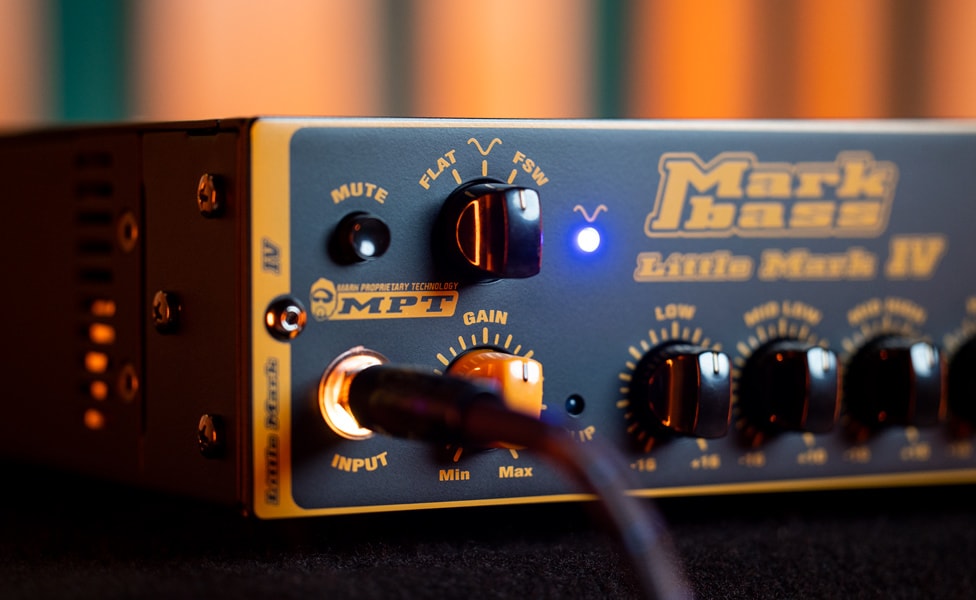
It's All in the Name: The Markbass Decoder Ring
As with many manufacturers, Markbass has a specific way of naming their products that, to those in the know, can tell you a lot about what it is and what it does. By the time we get through this little guide, you should qualify as "in the know." Sorry, though, there's no certificate to go along with it—just the satisfaction of knowing that you've got some insider knowledge.
Let's start with the numbers. Every Markbass combo or speaker cabinet has a number that indicates what the speaker complement of that product is. While we here in the U.S. are used to seeing cabinets defined as, "2x12" or "1x15," Markbass puts the speaker size first and number of speakers second. This means that a combo amp that has a name with a 121 in it is a single 12" speaker, and one with a 102 would be two 10" speakers. Pop quiz: What would be the speaker complement on an amp labeled 123? If you said, "Three 12" speakers," go to the head of the class.
Next, the letters. “CMD” means it's a combo amp. “H” means it has a compression driver and horn, while “P” means it's a piezoelectric tweeter. “R” means that any ports are rear facing, and “F” means ports are front facing. So, a cabinet designated as a 104HR would be four 10" speakers with a horn and a rear-facing port. It's kinda simple, once you know the logic behind it.
A recent development, at the time of this writing, at least, are the cabinets in the 58R line. These are divided into “Energy,” “Pure” and “P” series cabinets. The Energy cabinets use neodymium speakers and a custom tweeter (compression driver and horn) that accentuates high-mid frequencies for a more aggressive sound. The tweeter in the Pure series is more “hi-fi” for a smoother, natural sound. The P series swaps out the neodymium speakers for a more classic ceramic magnet speaker design and a piezo tweeter. All of the 58R cabinets are made of a new, ultralightweight material that'll seriously save you (or your crew) from some back pain. For example, the 58R 102 Pure cabinet weighs only 23 lb. Even with the heavier ceramic speakers—the 58R 102P—the cabinet is only 28 lb. All of the 58R cabinets have rear-facing ports.
Now let's get down to the nitty gritty of some actual amps and cabs, shall we?
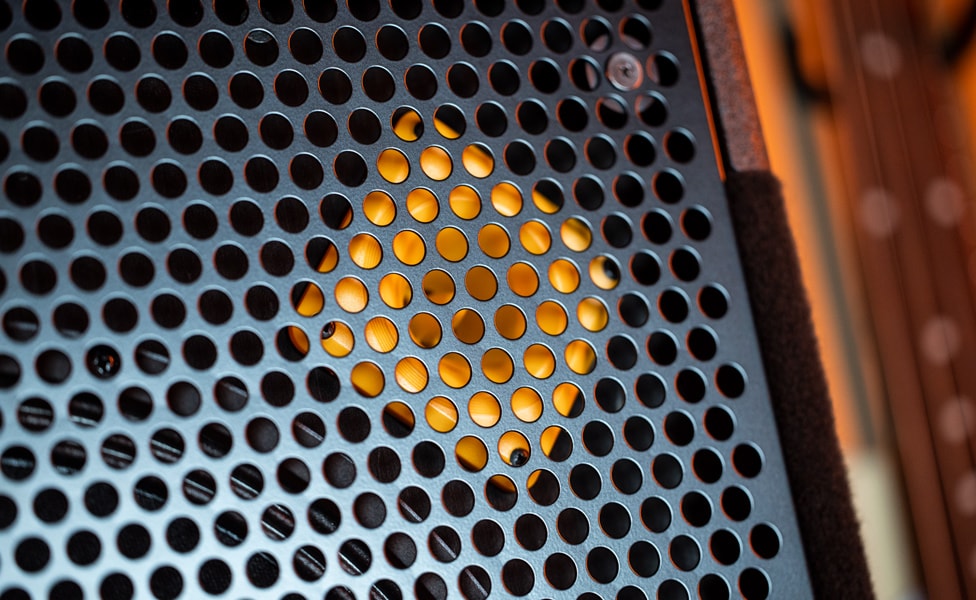
Markbass Amps
Whether you like to be able to walk into a gig with a combo amp in one hand and your axe in the other, or you need/want the added physical and sonic presence of a head and cabinet, Markbass has you covered. First up, we'll look at a solid sample of their available combo amps.
Markbass Combos
CMB 101 and 121 Black Line Combos
Marking (sorry, couldn't resist) their entry into amps aimed at the developing bassist, the Markbass CMB 101 and 121 Black Line combos deliver huge value in compact, amazingly light packages loaded with classic, signature Markbass tone. With a single neodymium 10" speaker, 40W of power, Markbass' versatile 4-band EQ, an 1/8" line in and headphone outs, plus a preamp line-level out for recording or feeding a secondary amp and speaker, the CMB 101 is a great choice for individual practice, small rehearsal or gig use, or recording. Stepping up to the Markbass CMB 121 combo (as you would expect from the name, using our decoder key above) adds on a 12" neodymium speaker, 150W of power and a balanced XLR direct out, making it a fully gig-capable amp for small- to medium-sized clubs and a solid choice for recording.
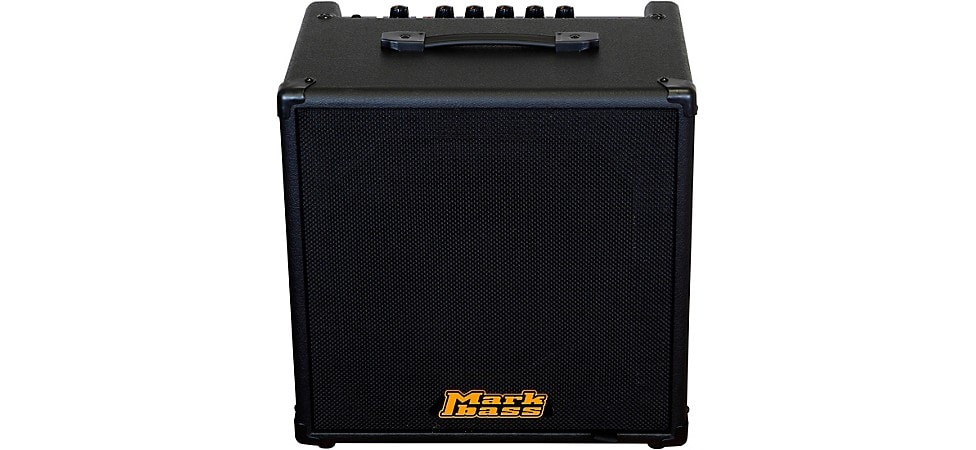
Pictured: Markbass CMB 101 Combo Amp
Micromark 801 60W 1x8
Even though it's not even a foot square and weighs in under 15 lb., the Markbass Micromark 801, a 60W, 1x8" combo, delivers the classic Markbass sound, with enough low end and volume to step beyond being a mere "practice amp." With the direct XLR out, you can run direct to the board and still have a small personal monitor for yourself. An AUX in, headphone jack and internal speaker defeat also enables silent practice anywhere.
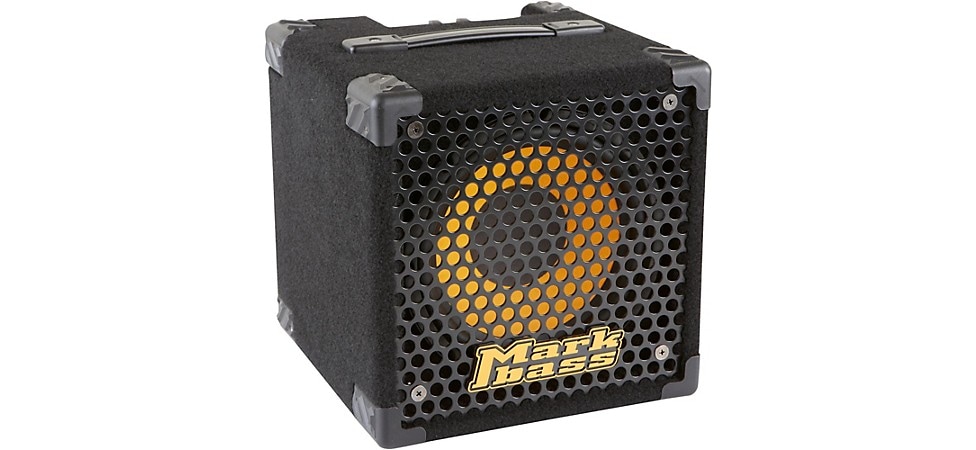
Pictured: Markbass Micromark 801 60W 1x8
Marcus Miller CMD 101 Micro 60
The smallest of the Marcus Miller Signature series, the Markbass CMD 101 Micro 60 steps up the speaker size from the Micromark 801 and adds a piezo tweeter for full-range, hi-fi sound. The three-band EQ gives you plenty of tonal range to play with, and it's eminently gigable in small and medium venues, with the same balanced D.I. feature to feed the board directly, as well as the private practice features you need. It's also a superb recording amp for any home studio, combining the benefits of recording the bass direct and having a live speaker for the bassist to feel their groove.
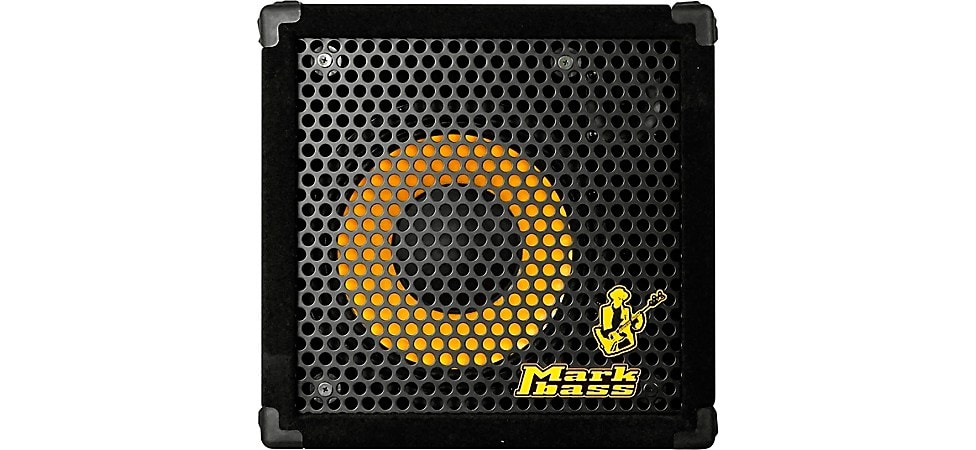
Pictured: Markbass Marcus Miller CMD 101 Micro 60
CMD JB Players School
The Markbass CMD JB Players School combo, developed with Jeff Berlin for his Players School of Music, is a 250W, 1x15" combo that is designed to be not just a "beginner's amp," but one that can carry you through your studies into a life of regular gigs. With the classic Markbass sound when the four-band EQ is set flat, and the ability to easily tweak the sound for the peculiarities of any particular venue, plus specialized VPF (Variable Pre Filter) and VLE (Vintage Loudspeaker Emulator) knobs, the JB Players School enables you to further shape your sound.
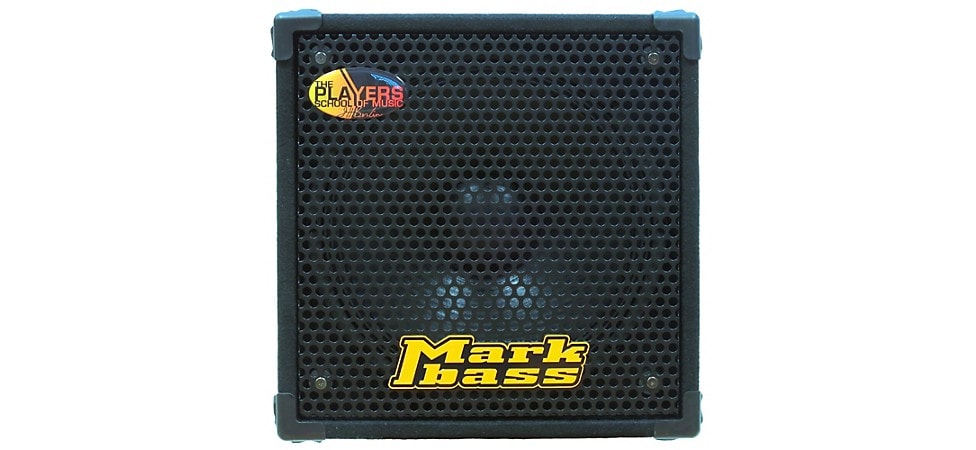
Pictured: Markbass CMD JB Players School Combo Amplifier
Mini CMD 121P IV
At barely more than 15" square and under 26 lb., the Markbass Mini CMD 121P IV still packs 500W of power to drive its single 12" speaker to full-blown gig levels with astoundingly rich tone. The four-band EQ is complemented by the "Old School" knob that rolls off highs for a rounder, more vintage sound, and a three-way rotary switch that flips from "Flat" to "Scooped" as well as enabling the optional footswitch to flip from Scooped to Mute. As a final touch, a bi-band limiter lets your high end breathe while controlling the thump.
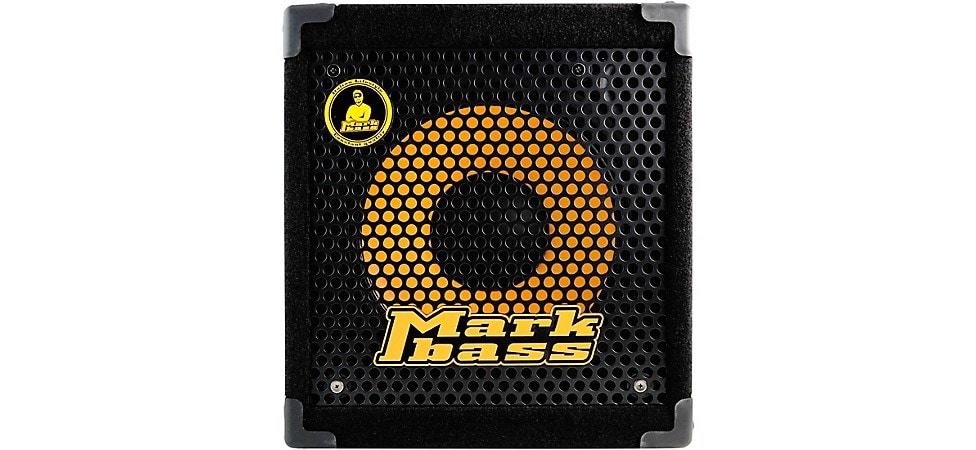
Pictured: Markbass Mini CMD 121P IV Combo Amplifier
Markbass Heads
Little Mark 250 Black Line
At 250W and just 5 lb., the Markbass Little Mark 250 Black Line is the nerve center of an incredibly affordable, yet immensely powerful bass rig. Like all the Little Mark series, it features the four-band EQ, VPF and VLE controls discussed above, plus an effects loop and a dedicated tuner output. Of course, it's got a balanced XLR line out, which is switchable pre/post EQ, but a nice addition is an XLR input, if your bass runs a balanced out.

Pictured: Markbass Little Mark 250 Black Line Amp Head
Little Mark IV
The next step up is the Markbass Little Mark IV. This 500W head features the enhanced features of the IV series amps, as touched upon with the Mini CMD 121P IV. The enhanced four-band EQ, Old School knob and bi-band limiter are all here, plus a front panel level knob for the pre/post EQ switchable balanced line out. And all this in a package that's just under 5.5 lb.

Pictured: Markbass Little Mark IV Amp Head
Little Mark 58R
The Markbass Little Mark 58R takes all the features of the Little Mark IV and packs them into a smaller, lighter (a full pound lighter) package. It also moves all the controls to the front panel for ease of control. This tiny powerhouse was designed to match up with Markbass' lighter, more responsive 58R line cabinets.

Pictured: Markbass Little Mark 58R Amp Head
Markbass Cabinets
MB58R
Rather than a single cabinet, this section looks at the entire family of Markbass cabinets dubbed MB58R. Why all at once? Two reasons—first, their cabinet construction itself is similar; second, as we touched on in the section on naming conventions, each configuration comes in three different flavors: Pure, Energy and P. Okay, what's the deal with the construction? The most revolutionary thing about the Markbass MB58R family of cabinets is how amazingly lightweight they are, even contrasted with previous generations of Markbass’ already very light cabinets. Just as a comparison, keeping it strictly within the Markbass family, the Standard 104HR cabinet tips the scales at almost 49 lb. (which is still amazingly light for a 4x10" cab with a horn), whereas the MB58R 104 Pure weighs in at an astounding 35.5 lb., over 13 lb. lighter. This is due to a new cabinet material, exclusive to Markbass, that's both lighter and more environmentally sensitive than traditional cabinet materials. As noted previously, all of the MB58R cabinets are rear-ported.
The different "flavors" enable a player to really dial in the precise sound they're looking for. The Pure cabinets, with their neodymium speakers and 1" compression driver and horn, deliver the classic, flat-response Markbass sound where what you hear is a clear reproduction of the raw sound of your bass (at least when you keep the EQ knobs set at 12 o'clock). The Energy cabinets combine the Neo speakers with a driver and horn that pushes more high-mid energy (Ha!—we see where the name comes from) for a more aggressive sound. De Virgiliis characterizes it this way: "If you have to
play with the bridge, like Jaco, the Energy is the cabinet for you," while also noting that rock players also tend to gravitate toward Energy cabs. The P variation switches to ceramic speakers, rather than neodymium, and a piezo tweeter for a more traditional bass cabinet sound.
One great thing about these cabs is the ability to mix and match them to really tweak your sound. For example, want a smoothly accurate sound, but with a touch of edge? You might try using a combination of an MB58R 103 Pure with an MB58R 102 Energy. The combinations of different cabinet voicings give you an immense sonic palette to choose from.
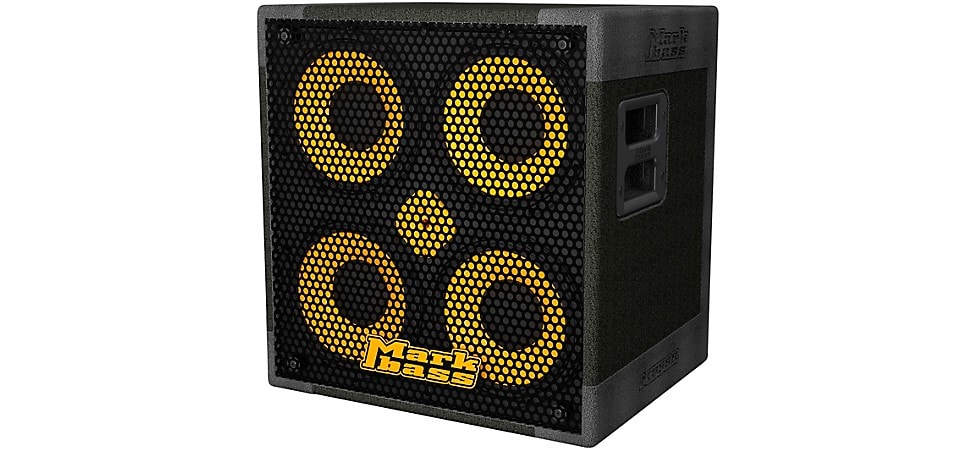
Pictured: Markbass MB58R 104 PURE Cabinet
Standard 104H
The Markbass Standard 104H (available in either front-port or rear-port versions) delivers the Markbass clear, accurate sound from its four 10" neodymium speakers and 1" compression driver and horn. At just 48 lb., it's easy to transport and will handle up to 800W of power. You can choose either 8 ohm or 4 ohm versions of this cab (if you intend to use a pair of cabs with a Markbass head, remember that the minimum load for the amp is 4 ohms, so you'll want to stick with the 8 ohm version for that).
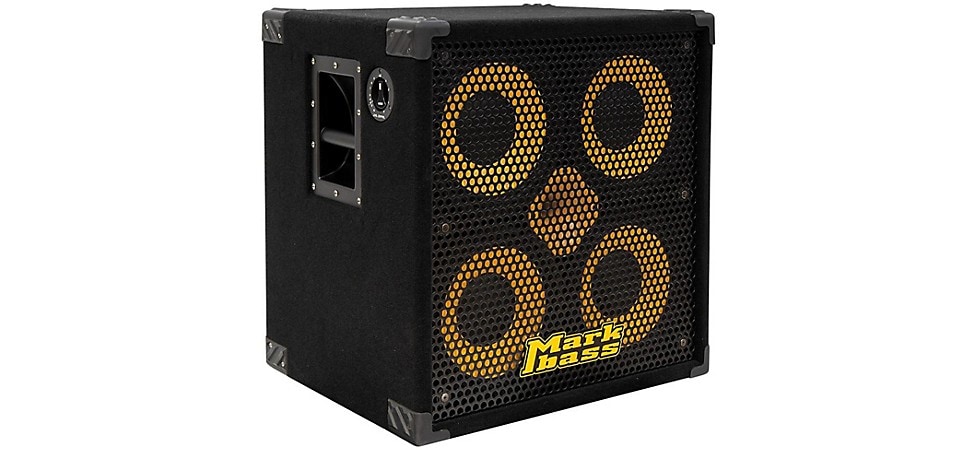
Pictured: Markbass Standard 104HR Cabinet
Standard 151HR and Traveler 151P
Even though the trend for the past couple of decades has been toward multiple smaller speakers for bass, there are still players who love the sound of a 15" bass driver, either by itself or as part of a multi-cabinet setup. For them, there are the Markbass Standard 151HR, with a compression driver and horn, or the smaller, lighter Traveler 151P with a piezo tweeter. Both cabinets are rear-ported.
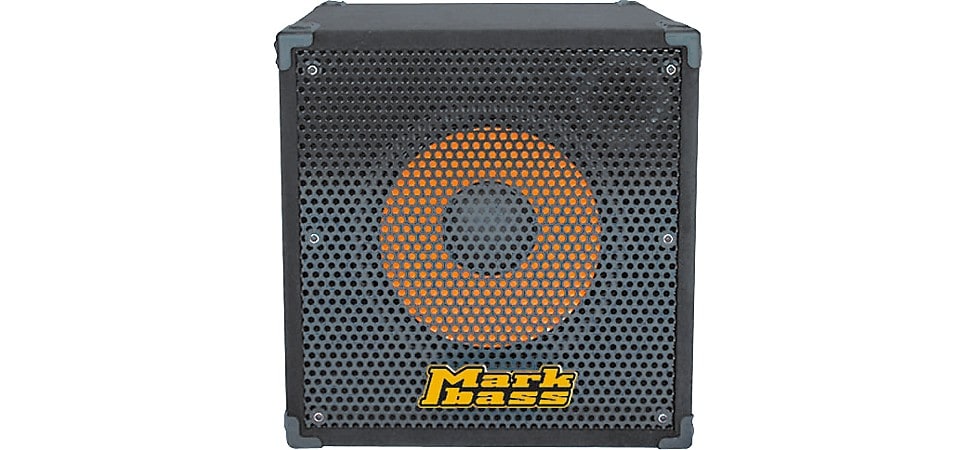
Pictured: Markbass Standard 151HR Cabinet
Traveler 102P
The Markbass Traveler 102P is a great choice when you need a lightweight 2x10 cab to use by itself or as part of a larger rig (say, for example, stacked with the Traveler 151P). The neodymium speakers and piezo tweeter make it light and compact, easy to carry from gig to gig, studio to studio or wherever you need to travel.
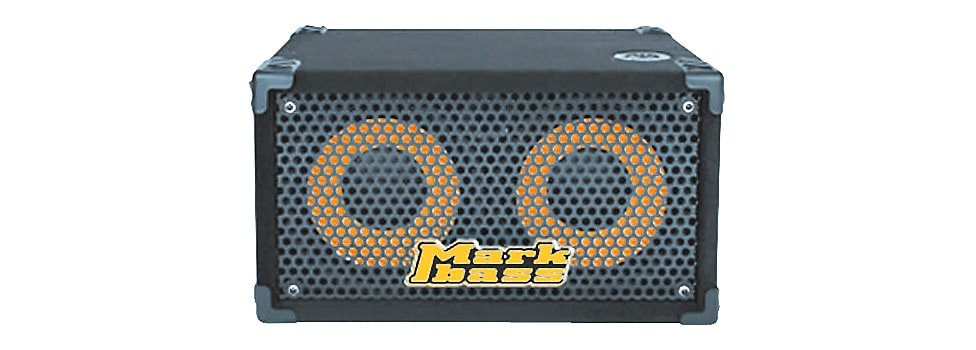
Pictured: Markbass Traveler 102P Cabinet
New York 121
Finally, the classic New York 121, one of Markbass' most popular cabinet designs. Originally designed as a match for the Mini CMD 121P combo, duplicating the combo's single neodymium 12" speaker and piezo tweeter, the New York 121 has been adopted by many Markbass aficionados to match up with one of the Little Mark heads for practice, small venue gigs or stacked with one of the other cab configurations for a larger live rig.
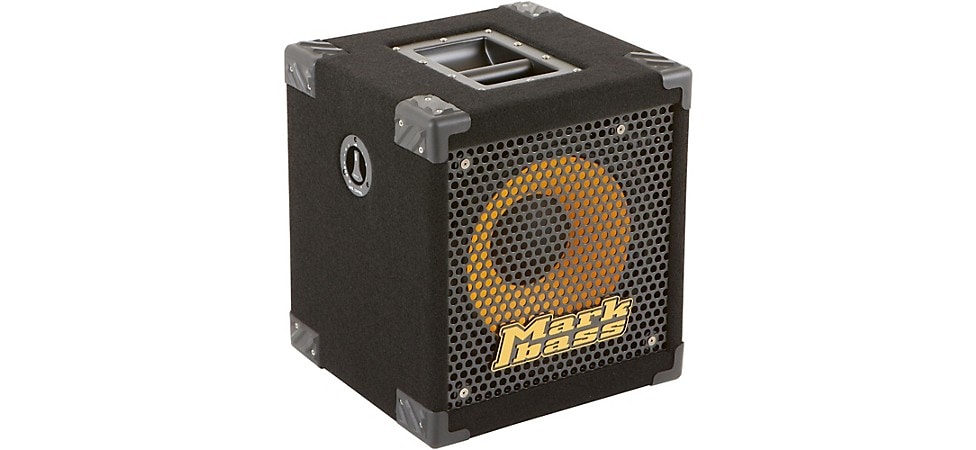
Pictured: Markbass New York 121 Cabinet
Conclusion
So, there you have it—a quick overview of Markbass amps and cabinets, with some history and background on the company. We at Guitar Center are hugely proud to have partnered with them to be the exclusive source for Markbass products in the U.S.A. We've also enjoyed seeing Marco De Virgiliis grow the company from its small Italian roots to become one of the most prestigious, in-demand lines of bass amps in the world. The combination of power, outstanding sound and affordability makes Markbass a company that every bass player should be checking out. So, stop by your local Guitar Center store and check one out in person, look them over on our website or talk with one of our knowledgeable call center specialists to find which Markbass is right for you.


